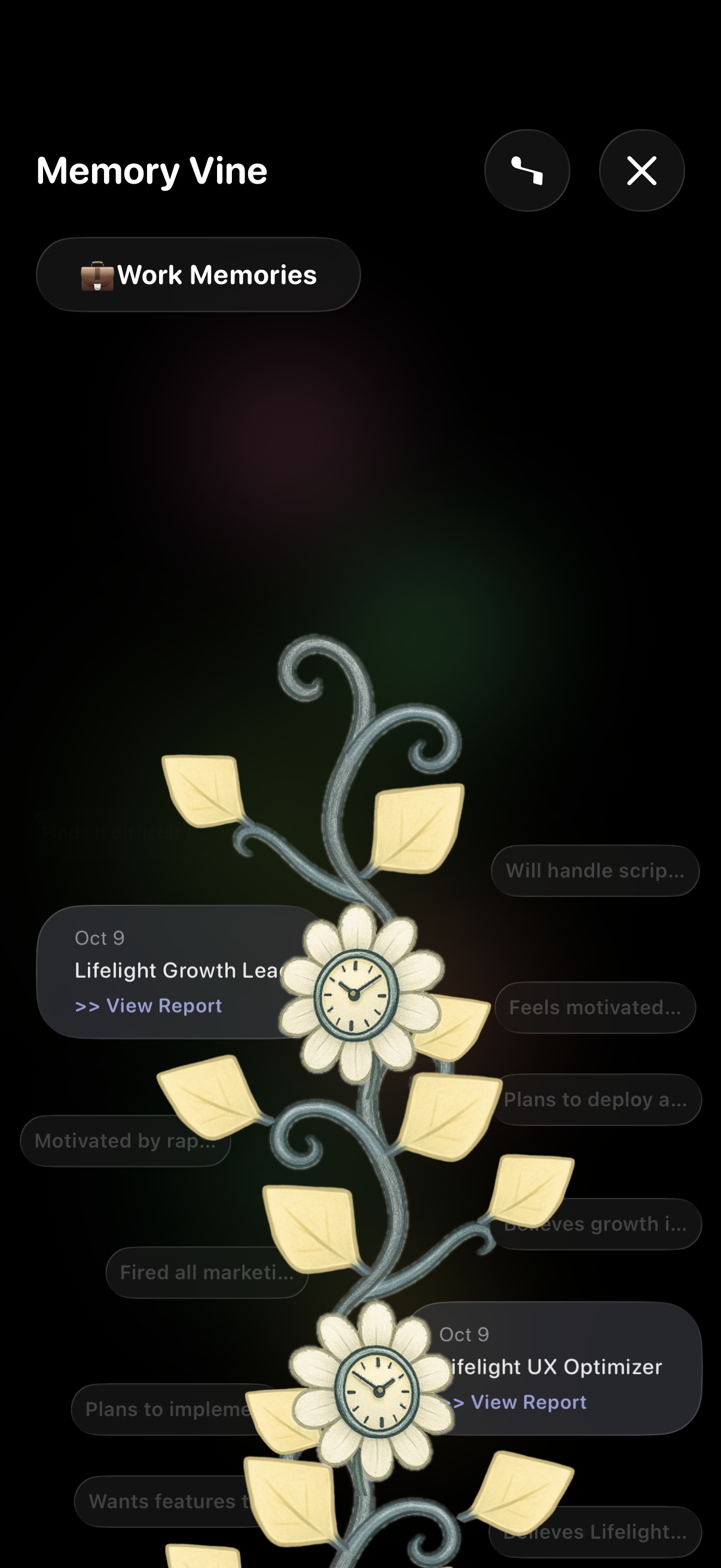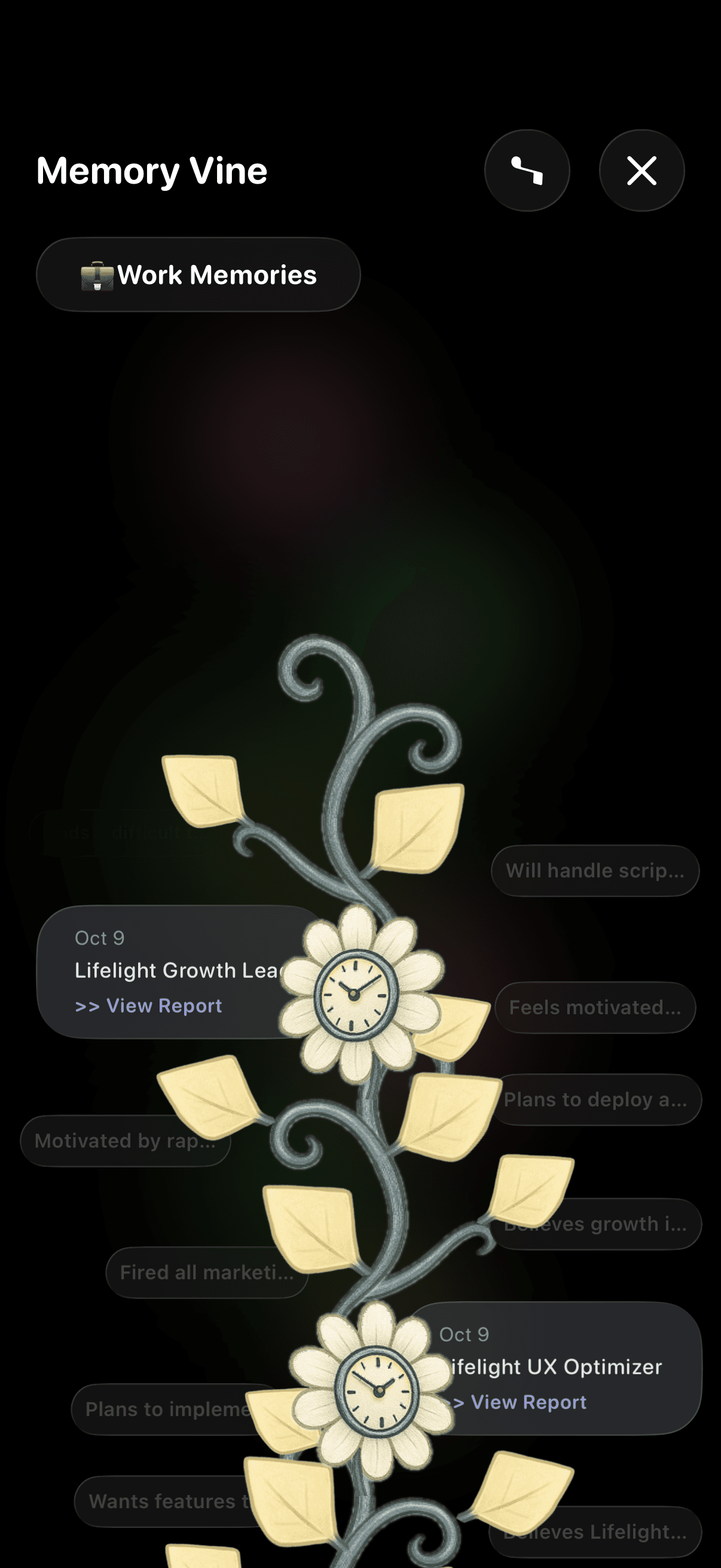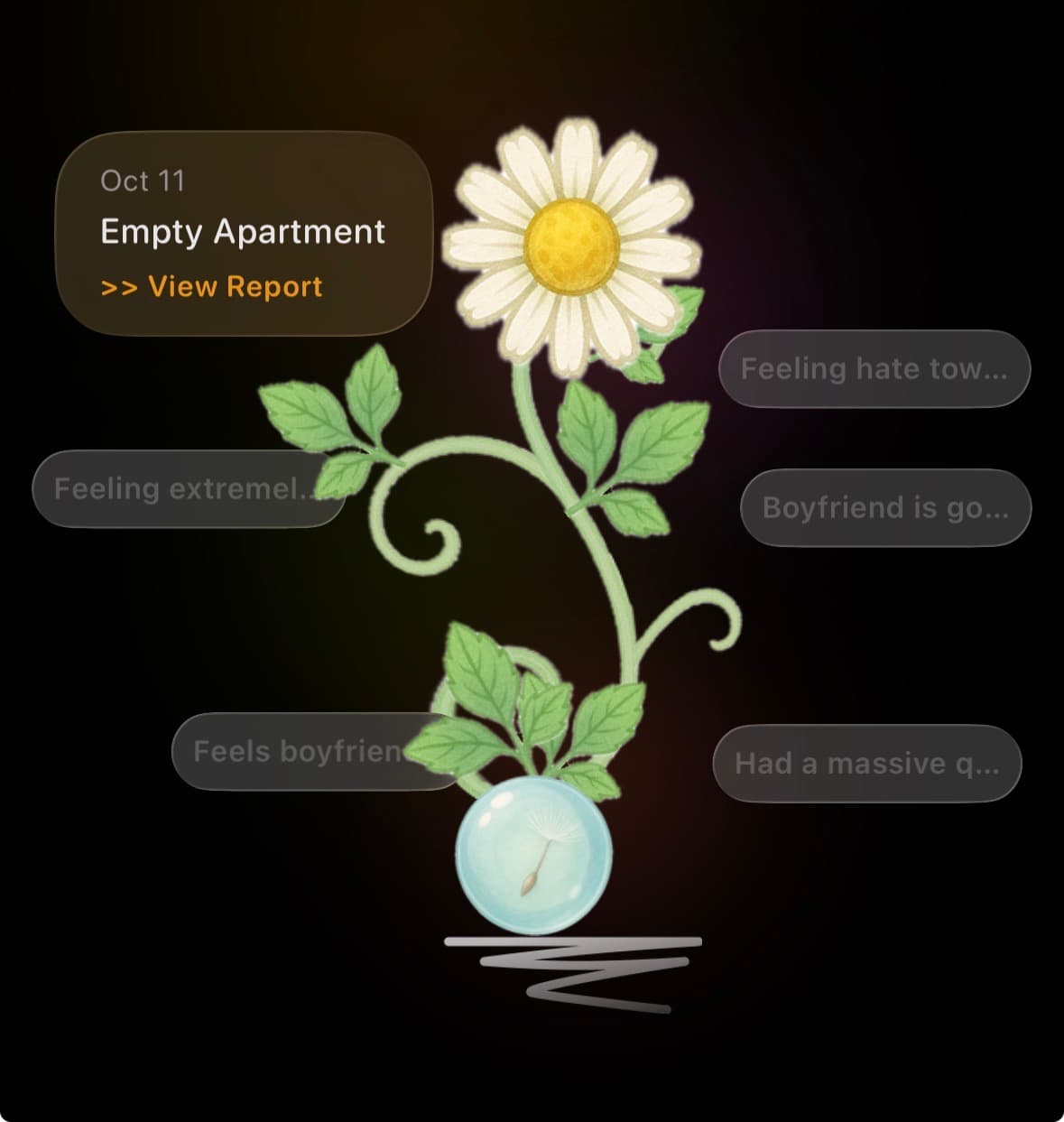Why Memory Journaling Matters
We forget 40% of our experiences within 24 hours. Life's precious moments—small wins, growth, meaningful conversations—slip away unless captured. Memory journaling preserves these experiences while revealing patterns and growth invisible in the day-to-day.
The best memory apps don't just store entries—they connect experiences across time, showing how past struggles inform present strength, how small decisions led to big changes, and how much you've grown even when it doesn't feel like it.
We've tested the leading memory and life journaling apps to find those that truly enhance reflection and self-understanding.
What Makes a Great Memory Journaling App?
- Connection across time: Links related memories to show patterns and growth
- Easy capture: Quick logging in the moment before memories fade
- Rich context: Photos, locations, moods, people—not just text
- Reflection prompts: Encourages looking back with purpose
- Visual timeline: See your life journey at a glance
- Privacy: Your personal history deserves protection
1. Memory Vine (Lifelight) - Best AI-Connected Memory Journaling

Why Memory Vine is #1: Most memory apps show you "what happened on this day last year." Memory Vine uses AI to connect related experiences across any timeframe, revealing patterns and growth you'd never notice manually.
Revolutionary Features:
- AI pattern recognition: Automatically connects similar emotions, situations, and themes across months or years
- Growth visualization: See how you handled similar challenges differently as you grew
- Context-aware memories: "You felt this way before. Here's what helped then."
- Emotional tagging: Integrated mood tracking shows emotional arcs over time
- Emma integration: AI companion reminds you of past resilience during current struggles
- Weekly insights: AI summaries connect the week's experiences to your larger story
- Rich multimedia: Photos, moods, journal entries, all interconnected

Real-World Impact:
The power of Memory Vine isn't just remembering—it's understanding. When you journal about feeling stuck in your career, Memory Vine shows you:
- Three times you felt "stuck" before, and each time you broke through
- The specific actions that led to those breakthroughs
- How your emotional pattern during stuck periods is consistent
- Evidence that "stuck" is always temporary for you, even when it feels permanent
This transforms journaling from memory storage into active self-discovery and resilience-building.
Integration Benefits:
Unlike standalone memory apps, Memory Vine is part of Lifelight's complete emotional wellness system. Your memories aren't isolated—they're enriched by mood data, Emma's insights, and journaling context. Everything informs everything else.
Pricing: Included with Lifelight (free with premium features)
Platforms: iOS, Android, Web
Best for: People who want to understand patterns, see growth, and connect memories meaningfully
2. Timehop - Best for Social Memory Nostalgia
What it does: Shows "on this day" memories from your social media and photo libraries.
Strengths:
- Automatically pulls from Facebook, Instagram, photos, etc.
- Fun, casual daily nostalgia
- No manual entry required
- Great for social memories and photos
- Simple, entertaining interface
Limitations:
- Only shows same-date memories (no thematic connections)
- No emotional context or mood tracking
- Depends on social media and photos—misses internal experiences
- No journaling or reflection features
- Can't track growth or patterns
- Often surfaces trivial content alongside meaningful memories
Pricing: Free with ads, Premium $4.99/month
Best for: People who want casual photo/social media nostalgia
3. 1 Second Everyday - Best for Video Memory Diary
What it does: Compiles daily 1-second video clips into a movie of your life.
Strengths:
- Unique video-based memory format
- Low barrier—just 1 second daily
- Powerful month/year compilations
- Great for visual people
- Emotionally impactful to watch
Limitations:
- Video-only—no journaling or text reflection
- Doesn't capture internal emotional experiences
- No pattern recognition or growth insights
- Requires remembering to film daily
- Can feel performative (what looks good vs. what matters)
- No mood tracking or emotional context
Pricing: Free basic, Premium $4.99/month
Best for: Visual people who want a video life diary
4. Momento - Best for Multi-Source Life Aggregation
What it does: Aggregates memories from multiple sources (social media, fitness apps, journals, photos) into one timeline.
Strengths:
- Pulls from 15+ sources automatically
- Comprehensive life timeline
- Private journal entries mixed with social posts
- Good search and tagging
- Beautiful design
Limitations:
- Can feel cluttered with auto-imported content
- No AI pattern recognition or insights
- No emotional tracking or mood analysis
- Focuses on quantity over meaningful reflection
- Doesn't connect related experiences across time
Pricing: $4.99 one-time
Best for: People who want everything in one comprehensive timeline
Quick Comparison Chart
| App | Best Feature | AI Insights | Emotional Context | Price |
|---|---|---|---|---|
| Memory Vine | AI pattern connections | ✓ Advanced | ✓ Full mood integration | Free+ |
| Timehop | Social media nostalgia | ✗ | ✗ | $5/mo |
| 1 Second Everyday | Video diary compilation | ✗ | ✗ | $5/mo |
| Momento | Multi-source aggregation | ✗ | ✗ | $5 once |
Choosing Your Memory App
For growth & self-discovery: Memory Vine's AI connections reveal patterns other apps can't
For casual nostalgia: Timehop is fun but superficial
For visual diaries: 1 Second Everyday is unique but lacks depth
For comprehensive logging: Momento aggregates everything but doesn't provide insights
Why Memory Vine's Approach Is Different
Here's what other memory apps miss: memories are only valuable if they teach you something.
Timehop shows you "3 years ago today" with a random photo. So what? Unless that memory connects to something meaningful, it's just nostalgia.
Memory Vine uses AI to ask: How does this memory relate to your life now?
When you're struggling with a difficult decision, Memory Vine surfaces:
- Times you made similar decisions and what happened
- How you felt during those periods vs. how you feel now
- What your past self learned that your present self forgot
- Evidence that you have wisdom from experience to draw on
This is memory as tool for growth, not just entertainment.
The Psychology of Memory & Reflection
Research shows that structured life review:
- Increases resilience: Remembering past coping builds confidence for current challenges
- Reduces depression: Seeing growth combats "nothing ever changes" thinking
- Enhances meaning: Connected memories reveal life themes and values
- Improves decision-making: Learning from past experiences informs current choices
- Builds identity: Coherent life narrative strengthens sense of self
But these benefits require connection and context—exactly what Memory Vine provides and simple memory apps lack.
Making Memory Journaling Work
1. Capture Consistently
Don't wait for "significant" moments. Small daily experiences reveal patterns. Memory Vine makes this easy with quick logging.
2. Add Emotional Context
External events matter less than how they made you feel. Memory Vine integrates mood tracking so memories include emotional data.
3. Review Regularly
Memory Vine's weekly insights do this automatically, but also manually review. Ask: What patterns do I see? How have I grown?
4. Connect Past to Present
When facing challenges, actively search past memories for similar situations. Memory Vine suggests these automatically.
5. Celebrate Growth
Depression tells you nothing changes. Documented memories prove it wrong. Use Memory Vine to see concrete evidence of growth.
Common Pitfalls to Avoid
Quantity Over Quality
Timehop and Momento can overwhelm with hundreds of auto-imported posts. Memory Vine focuses on meaningful entries with depth.
Surface-Level Logging
1 Second Everyday captures moments but not meaning. Add reflection: Why does this moment matter?
Never Reviewing
Capturing without reflecting wastes the practice. Memory Vine's proactive insights ensure memories inform present.
Ignoring Emotions
Events without emotional context are just data. Memory Vine's mood integration makes memories emotionally meaningful.
Real-World Memory Vine Examples
Career anxiety: "You felt uncertain about your career three times before. Each time, taking small experiments (not big leaps) led to clarity. Here are those entries."
Relationship pattern: "You've felt this disconnected from your partner twice before. In both cases, initiating vulnerable conversation (not waiting) improved things. Here's what you said worked."
Depression cycle: "You've had four similar low periods. Each lasted 2-3 weeks, not forever like it feels now. Here's your entry from the last one where you wrote 'I can't believe I felt hopeless last month—I'm okay now.'"
This is the power of AI-connected memory: your past becomes a resource for your present.
Final Thoughts
If you want fun photo nostalgia, use Timehop. If you want a video diary, try 1 Second Everyday. If you want to aggregate everything, Momento works.
But if you want memories that teach you—that reveal patterns, show growth, build resilience, and actively support your mental health—Memory Vine in Lifelight is revolutionary.
The integration with journaling, mood tracking, and AI insights creates something no standalone memory app can match: a living record of your emotional life that actively helps you understand yourself and grow.
Your memories are more than nostalgia. They're wisdom. Choose an app that helps you access it.



